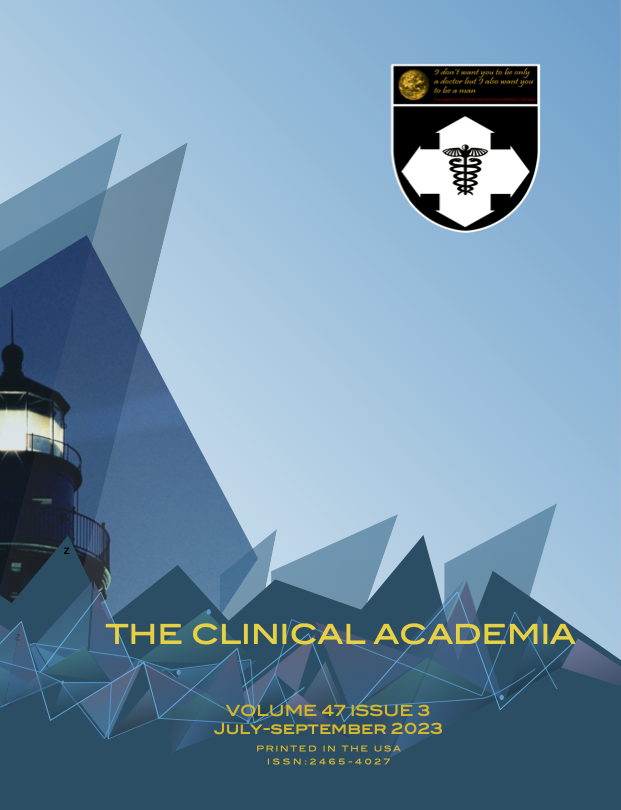Bone marrow involvement and risk of tuberculosis reactivation in adults with lymphoma
Abstract
ABSTRACT
OBJECTIVE
To investigate the relationship between bone marrow involvement and the risk of tuberculosis (TB) reactivation in adult lymphoma patients.
METHODS
This retrospective cohort study was conducted at Chiangrai Prachanukroh Hospital, Thailand, from January 2015 to December 2022, focusing on patients newly diagnosed with lymphoma. The primary exposure of interest was bone marrow involvement, and the study aimed to investigate its association with the primary outcome of TB reactivation and the secondary outcome of mortality among the cohort of lymphoma patients.
RESULTS
There were 504 patients with lymphoma included in our analyses; 18 with bone marrow involvement and 486 without. Patients with bone marrow involvement had a significantly higher risk of TB reactivation (RR, 9.00; 95% CI, 4.06 to 19.93), disease progression (RR, 3.43; 95% CI, 2.64 to 4.44), and all—cause mortality (RR, 2.22; 95% CI, 1.69 to 2.93), high IPI scores (4–5) were significantly associated with an increased risk of TB reactivation (AOR, 1.67; 95% CI, 1.92 to 2.33) and higher mortality (AHR, 1.83; 95% CI, 1.23 to 2.73). HIV infection also showed a significant association with both TB reactivation (AOR, 1.95; 95% CI, 1.18 to 3.23) and mortality (AHR, 2.28; 95% CI, 1.32 to 3.95). Other factors, such as age >60 years, male gender, lymphoma involving bone marrow, diabetes mellitus, and chronic kidney disease stage III—V, exhibited no statistically significant associations with TB reactivation or mortality.
CONCLUSION
In the present study, we found no association between bone marrow involvement and risk of TB reactivation in the adults with lymphoma.
References
2. Maartens G, Wilkinson RJ. Tuberculosis. Lancet 2007;370:2030-2043.
3. World Health Organization. 2015 Global Tuberculosis Report. Geneva, Switzerland: WHO, 2015.
4. World Health Organization. 2022 Global Tuberculosis Report. Geneva, Switzerland: WHO, 2022.
5. Getahun H, Gunneberg C, Granich R, et al. HIV infection-associated tuberculosis: the epidemiology and the response. Clin Infect Dis 2010;50: Suppl. 3:S201-S207.
6. Dobler CC, McDonald SP, Marks GB. Risk of tuberculosis in dialysis patients: a nationwide cohort study. PLoSOne 2011;6:e29563.
7. Dobler CC, Flack JR, Marks GB. Risk of tuberculosis among people with diabetes mellitus: an Australian nationwide cohort study. BMJ Open 2012; 2: e000666.
8. Dobler CC. Biologic agents and tuberculosis. Microbiol Spectr 2016; 4. doi: 10.1128/microbiolspec.TNMI7-0026-2016
9. Dobler CC. Biological agents and tuberculosis: risk estimates and screening strategies. Int J Rheum Dis 2015; 18:264-267.
10. Mancuso S, Mattana M, Carlisi M, et al. Effects of B-Cell Lymphoma on the Immune System and
Immune Recovery after Treatment: The Paradigm of Targeted Therapy. Int. J. Mol. Sci 2022; 23: 3368.
11. Bourke CD, Berkley JA, Prendergast AJ, et al. Immune dysfunction as a cause and consequence of
Malnutrition. Trends in Immunology 2016; 37(6): 386-398.
12. Dobler CC, Cheung K, Nguyen J, et. al. Risk of tuberculosis in patients with solid cancers and haematological malignancies: a systematic review and meta-analysis. Eur Respir J 2017;50(2):1700157.
13. Swerdlow SH, Campo E, Pileri SA, et. al. The 2016 revision of the World Health Organization classification of lymphoid neoplasms. Blood 2016;127(20):2375-2390.
14. Lohlun RK, Chapanduka ZC. Factors associated with bone marrow involvement in lymphoma staging bone marrow examination: A South African single-centre retrospective study. S. Afr. j. oncol 2022; 6(0), a211.
15. Brudno J, Tadmor T, Pittaluga S, et al. Discordant bone marrow involvement in non-Hodgkin lymphoma. Blood 2016;127(8):965-970.
16. Cheon J, Kim C, Park EJ. Active tuberculosis risk associated with malignancies: an 18-year retrospective cohort study in Korea. J Thorac Dis 2020;12(9):4950-4959.
17. Chen CY, Sheng WH, Cheng A, et al. Clinical characteristics and outcomes of Mycobacterium tuberculosis disease in adult patients with hematological malignancies. BMC Infectious Diseases 2011;11:324.
18. Kim ES, Song GA, Cho KB, et al. Significant risk and associated factors of active tuberculosis infection in Korean patients with inflammatory bowel disease using anti-TNF agents. World J Gastroenterol 2015;21(11): 3308-3316.
19. Bureau of tuberculosis, ministry of public health, Thailand. (http://tbcmthailand.ddc.moph.go.th Publication on April 2021)
20. Nanthanangkul S, Promthet S, Suwanrungruang K, et al. Incidence of and Risk Factors for Tuberculosis among Cancer Patients in Endemic Area: A Regional Cohort Study. Asian Pac J Cancer Prev 2020 Sep; 21(9): 2715-2721.
21. Libshitz HI, Pannu HK, Elting LS, Cooksley CD: Tuberculosis in cancer patients: an update. J Thorac Imaging 1997; 12:41-46.
22. Cheng MP, Chakra CNA, Yansouni CP, et al. Risk of Active Tuberculosis in Patients With Cancer: A Systematic Review and Metaanalysis. Clinical Infectious Diseases 2017;64: 635-644.
23. Han X, Kilfoy B, Zheng T, et al. Lymphoma survival patterns by WHO subtype in the United
States, 1973–2003. Cancer Causes Control 2008; 19:841-858
24. Ruppert AS, Dixon JG, Salles G, et al. International prognostic indices in diffuse large B-cell lymphoma: a comparison of IPI, R-IPI, and NCCN-IPI. Blood 2020;135(23):2041-2048.
25. D’Angelo CR, Hanel W, Chen Y, et al. Impact of initial chemotherapy regimen on outcomes for patients with double‐expressor lymphoma: A multi‐center analysis. Hematological Oncology 2021;1-10.
26. Wästerlid T, Mohammadi M, Smedby KE, et al. Impact of comorbidity on disease characteristics, treatment intent and outcome in diffuse large B-cell lymphoma: a Swedish lymphoma register study. J Intern Med 2019;285(4):455-468.
27. Sehn LH, Berry B, Chhanabhai M, et al. The revised International Prognostic Index (R-IPI) is a better predictor of outcome than the standard IPI for patients with diffuse large B-cell lymphoma treated with R-CHOP. Blood 2007;109:1857-1861.
28. Shieh SH, Probst JC, Sung FC, et al. Decreased survival among lung cancer patients with co-morbid tuberculosis and diabetes. BMC Cancer 2012;12:174.
29. Hung CL, Su CC, Ou CY. Impact of active pulmonary tuberculosis on the prognosis of patients
with upper aerodigestive cancers: An 8-year observational study in a nationwide cohort. Journal of Infection and Public Health 2022;15:1540-1545.



